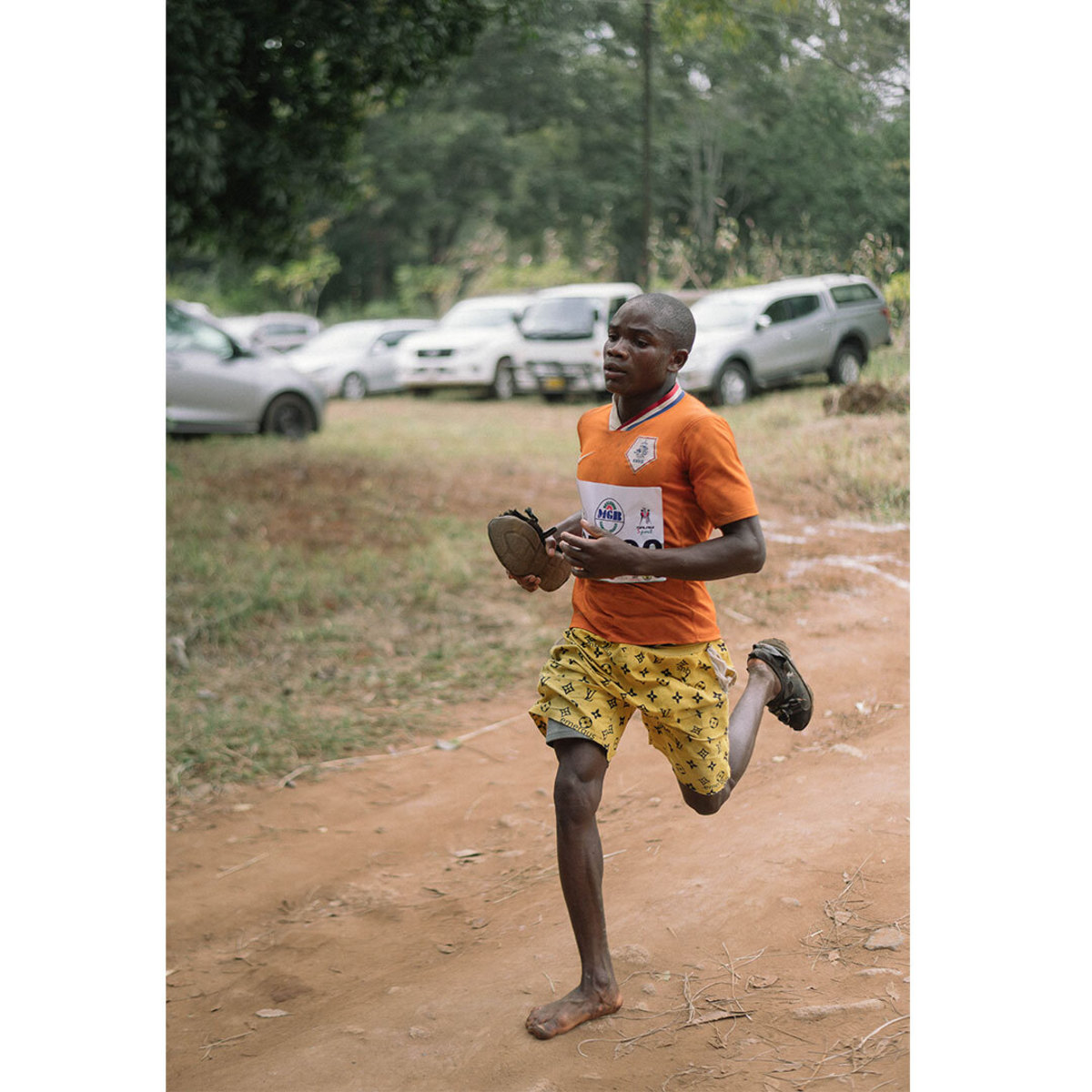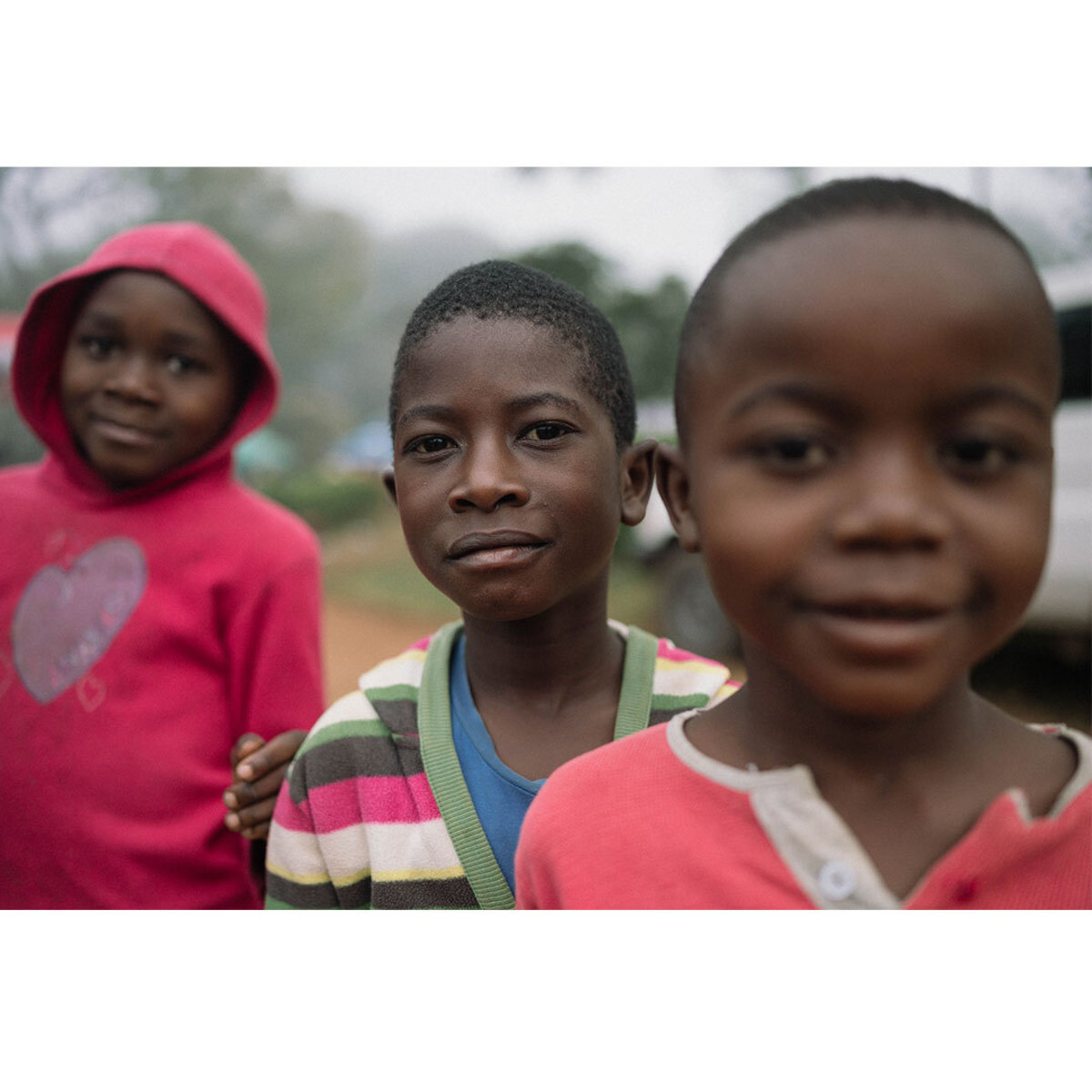Deep in southern Malawi on a fogged-in, red-dirt trail, a patter of footsteps grows louder. Out of the pea soup, a runner appears, flashes a peace sign and blazes past on the steep downhill. Another runner pops into view and vanishes just as fast. And another. All of them are pushing the final half-mile to the finish line of the Porters Race—the most grueling 25K trail running event you’ve never heard of.
Virtually unknown in the running world, Malawi’s Porters Race features crippling technical terrain and agile racers to match. Even more impressive? Look down. Some local competitors whizzing by are barefoot. Others are armored in beat-up Crocs or flip-flops MacGyvered with chicken wire.
“They’re not used to wearing shoes,” says race coordinator Kondwani Chamwala about many of the Porters Race competitors. “Many of them go barefoot because they just run better that way.” Others, however, simply cannot afford shoes.
The route loops up and down the Mulanje Massif, a granite- and jungle-blanketed behemoth rising from the southeastern African plains. Sapitwa, its highest peak, soars 7,500 feet above a smattering of villages. Hyenas loiter on the mountain’s flanks. So do trekkers and adventure seekers drawn to the area. Many of them hire porters from area villages, who tote 100-pound loads up steep trails for their clients. These porters are the backbone of the race, which dates to 1996 when it was a loosely organized, almost entirely shoeless event.

First prize back then was a Sony Walkman cassette player. While the purse is cash prizes these days, many of the 319 runners partaking in this year’s 24th annual Porters Race (revived after a two-year pandemic hiatus) are competing for the pride of simply finishing.
Most are now wearing shoes—or some form of them. The first three miles contain 3,000 feet of gain on boulder-strewn trails, which turn to slicked-out mud for the next 2,000 feet of vert. The final three miles plummet 5,000 feet across wet, 40-degree granite slabs laced with multiple river crossings. Shoed or not, the porters are flying.
“They straight-up float down the trail,” says Matthew McGeever, a seasoned trail runner based in Colorado, marveling at the local talent. Would McGeever ever consider trying it barefoot? “This is the most technical trail race I’ve ever done. Without shoes, my feet would be worn down to the ankles.”
At the finish line, a crowd of 4,000 cheers on competitors stumbling in—collapsing in the dirt, absolutely gassed. The course record of 2 hours, 4 minutes remains unbroken, despite a valiant effort by first place Jafali Jossam, from nearby Likhubula, who clocks a superhuman 2 hours, 7 minutes, 13 seconds. “I believe someone can run it in under two hours,” says Chamwala. “Every year people get close.”

Tereza Master, a Mulanje-based local and Olympic marathoner, arrives at the finish line in a blistering 2 hours, 57 minutes—bagging second place. She’s won the women’s side six times.
Her shoes? Aqua-blue Champion sneakers with gaping holes in the sides. Master’s second-place prize money of 300,000 Malawian kwacha (about $300) should more than cover some new kicks. But in impoverished Malawi other staples come first, even for a famed, local Olympian.
As Master puts it, “This will help put food on the table.”
from Men's Journal https://ift.tt/FcV6G3w



No comments:
Post a Comment